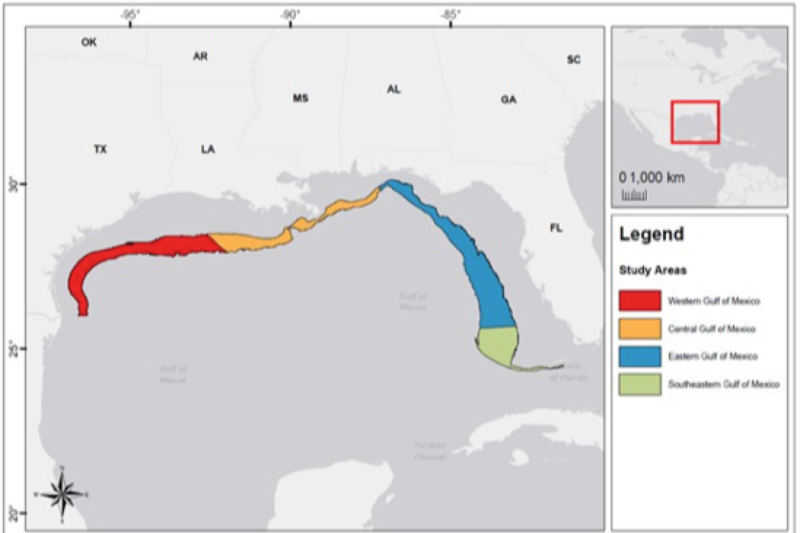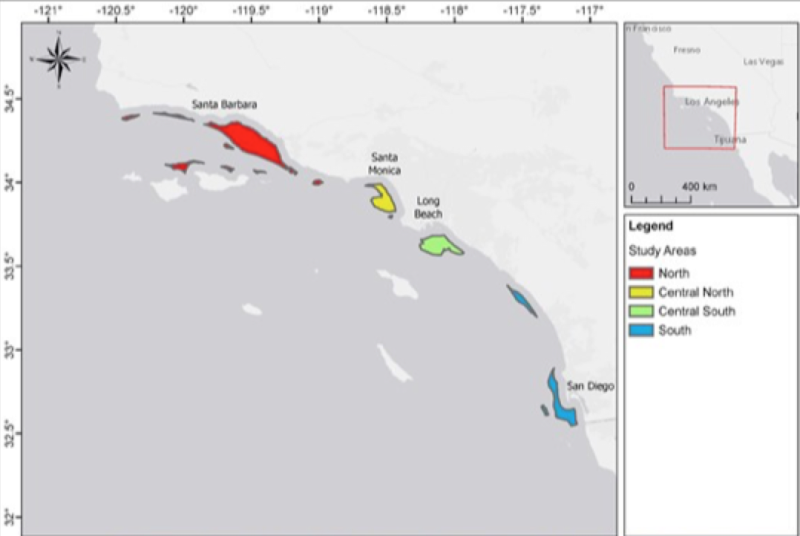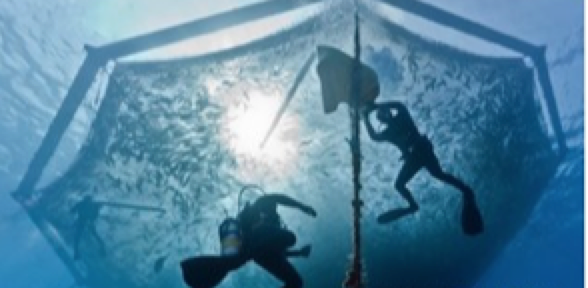Now in the early stages of planning, NMFS officials are seeking public comments on the potential for “aquaculture opportunity areas” off southern California and the Gulf of Mexico.
It’s an early step in what will be a three-year process to identify those areas and develop “programmatic” environmental impact statements, agency workers said in a online virtual public information session Dec. 3.

The California and gulf areas outlined so far by NMFS for study will not entirely become set aside for aquaculture, stressed Kristy Beard, a NMFS fishery policy analyst.
“Aquaculture opportunity areas are about spatial analysis and environmental analysis,” said Beard. The process aims to maximize compatibility of aquaculture with other uses, including wild fisheries, navigation, commercial activities and military missions, she and other speakers explained.
That’s one reason it makes sense to start with the Gulf of Mexico and California, said Beard. There is already a lot of long-existing spatial analysis and environmental data that can be mined and help run the aquaculture planning process.
“We’ve worked over the past decade to develop these data sources,” said James Morris, a scientist with the National Oceans Service. “We want to make sure we avoid conflict when possible.”
The resulting “geodatabase” can have as many as 200 data. Layers, and focus down to 10-acre cells in the map grids, said Morris.
Off California, NMFS is looking at potential areas from Santa Barbara to San Diego; in the Gulf of Mexico, the study will examine a swath from Florida to Texas.
NMFS officials say future aquaculture operations in those areas will be required to meet the usual suite of government review and permitting requirements.
Bill Dewey, the director of public affairs for Taylor Shellfish Farms in Seattle, Wash., said he appreciates the effort NMFS is undertaking, and hoped it could facilitate permitting for new projects. Taylor opened some operations in British Columbia “because of permitting challenges here in the United States,” he added.
The agency is accepting written comments until Dec. 22, and they can be submitted online.








